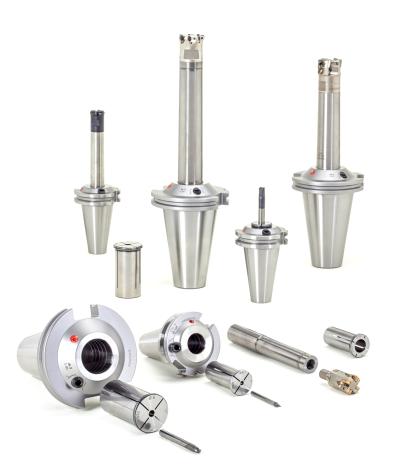
Thanks to their outstanding tool lives, fine surface finish and maximum concentricity, hydraulic chucks found their place in milling. And there is good reason since these chucks offer both continuous action of the cutting edge and excellent vibration-damping properties. Fitted with such a lot of positive features, hydraulic arbors and adapters are suitable for the range of products of POKOLM Frästechnik GmbH & Co. KG.
Furthermore, it should be pointed out in terms of economy that the hydraulic clamping system of zero-reach arbors allows the clamping of bars and tools without any additional devices and thus provides shortest setup times and prevents micro-fractures on the cutting edge.
In addition as promised by POKOLM, the system provides a continuous clamping force even at high speeds, thus ensuring optimum process reliability over all speed ranges.
Exact repeat accuracy is ensured by the axial longitudinal adjustment.
The maintenance of the hydraulic system is easy and can be done by the user himself.
Delivered as zero-reach arbors and fitted with BT40/BT50 or SK40/SK50 connection, they extend the product portfolio of the East Westphalian milling expert as of now. A flexible clamping range of 3 to 32 mm is provided thanks to the use of reduction sleeves.
Everything from a single source: the hydraulic arbors and adapters suited for minimum quantity lubrication (MQL) and the comprehensive range of accessories from POKOLM are optimally matched to each other. The complete range of hydraulic arbors and adapters with all matching products is summarised by POKOLM in a clearly laid out brochure.
The hydraulic arbors and adapters are in stock and can be shipped immediately.
Contact Details
Related Glossary Terms
- gang cutting ( milling)
gang cutting ( milling)
Machining with several cutters mounted on a single arbor, generally for simultaneous cutting.
- milling
milling
Machining operation in which metal or other material is removed by applying power to a rotating cutter. In vertical milling, the cutting tool is mounted vertically on the spindle. In horizontal milling, the cutting tool is mounted horizontally, either directly on the spindle or on an arbor. Horizontal milling is further broken down into conventional milling, where the cutter rotates opposite the direction of feed, or “up” into the workpiece; and climb milling, where the cutter rotates in the direction of feed, or “down” into the workpiece. Milling operations include plane or surface milling, endmilling, facemilling, angle milling, form milling and profiling.
